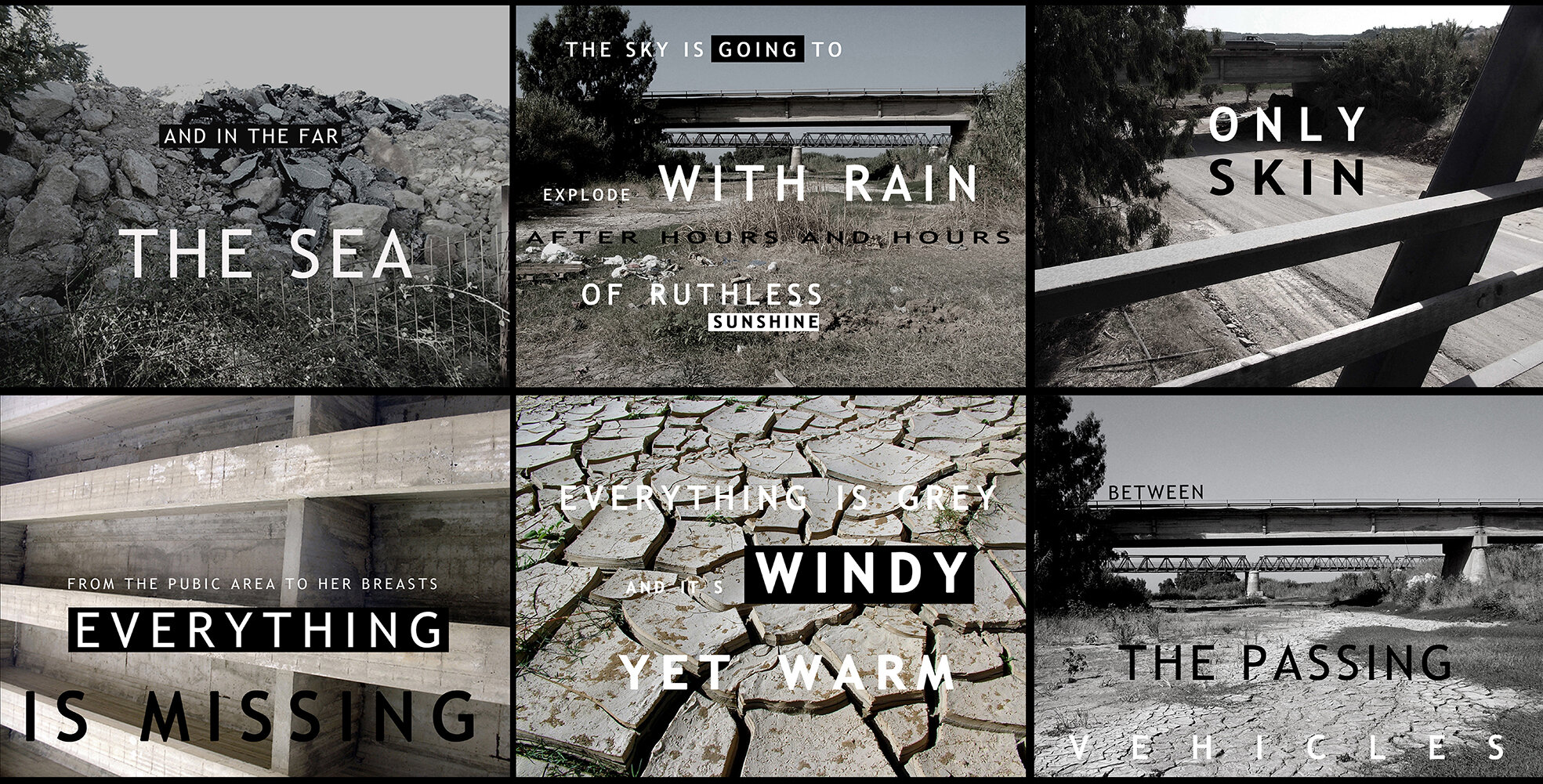E94, 2006
photography, text
Christiana Galanopoulou, Nadia Kalara: E94
Though a painter, Nadia Kalara “constructs” her works like an architect. The composition of the photographs, their digital processing, the preoccupation with the concepts of space, place and landscape, the appeal of buildings as primary artistic material, even the use of text, all bring to mind architectural structures.
Project E94 started last year as part of the summer workshop of the Mediterranean Architecture Centre titled “2 Bridges_ construction event”. Among other things, the workshop’s program involved the creation of works by artists inspired by the site of the Tauronites river in northern Crete; here, an old, disused metal bridge built by the army, stands next to the concrete bridge through which the highway passes today.
When the artist found herself on the site, the awkwardness of the landscape, its heat, dust and grayness, brought to mind a dream she’d had where she is standing on a similar bridge in the equally gray landscape of the Athens-Corinth National Highway, and sees on the opposite side of the road, the repugnant figure of her grandmother. E94 is a first rendition of the final work, composed of the dream text and four, out of a total of thirty five, processed images.
The coexistence of image and text serves a purpose: it reflects a recurring speculation in her work about textual and visual representation, about the discord that may or may not exist between these two modalities of perceiving the world. Nevertheless, language is treated as verbal architecture, whose segments build a second layer of affect on the images, one that is thoroughly fragmented, eliciting a sense of paradox.
The images themselves as objects, are reminiscent of billboards on the side of a highway crossing an immense plain: as one drives past, trying to read the writing, one retains only a general impression of the image. This cross-referencing to the billboard and to graphic design causes an aesthetic conflict between the affectively charged image and the distancing esthetic of the text outlined on it, wrecking it, intentionally bringing to mind the esthetics of advertizing: a reference to the
constructed image, echoing the constructed reality. Nadia Kalara reconfigures aspects of reality to discover, like a character in a David Lynch film, that what we’re living through is merely a representation, that incoming data is reformed, either by our environment or our own subconscious reform, into something that may possess the semblance of reality, but isn’t real.
The bridge, like a strait or any other kind of passageway between two realms, has always been a site where this proximity between consciousness and the subconscious could happen. Here, there is the ground for emerging into a landscape where human presence has transformed space into a site of paradox, a residual site. This emergence assumes the guise of a dream where heterogeneous elements are dominated by the savage figure of the grandmother. The memory of the dream after some time can become a classic form of the reconstruction of reality. The phallic symbol of the bridge prompts recall of a dream full of fear, anxiety and abjection. While the human traces of her body and her sleep, her conscious and unconscious world, are inscribed on the bed, the images transform the hotel room into an open space where the vast national highways enter. And, how strange, they are all reminiscent of E94, the national Athens-Corinth highway.






























